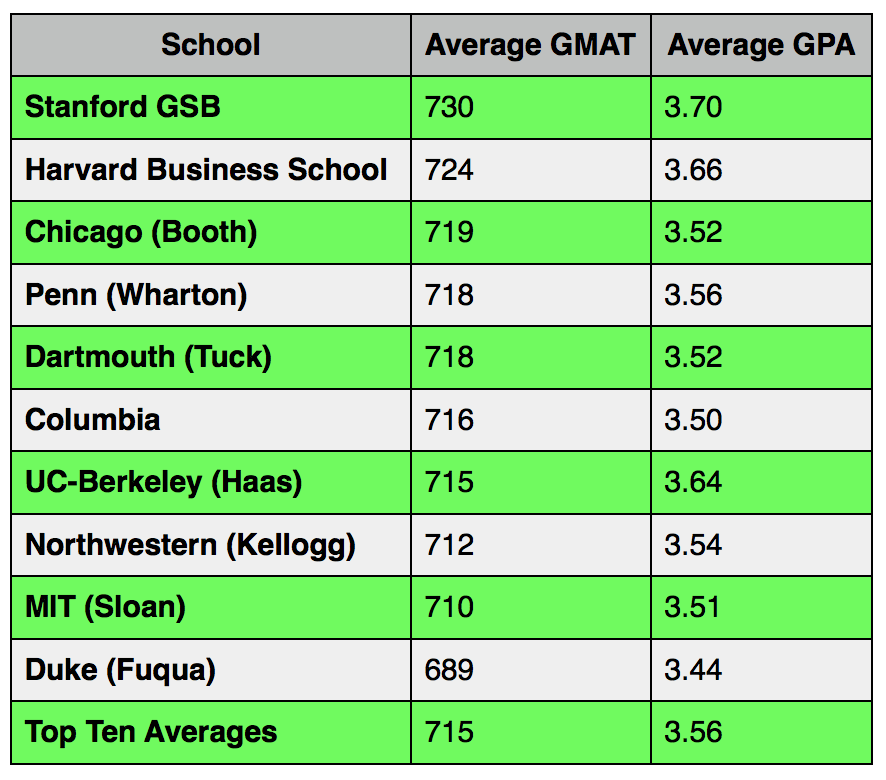
If you’re targeting a top MBA program, understanding the average GMAT scores of admitted students is crucial. These scores not only provide a benchmark but also help you gauge your competitiveness in the admissions process. Let’s break down the average GMAT scores for leading business schools and explore what they mean for your application.
Why GMAT Scores Matter
The GMAT is a standardised test that helps business schools assess candidates’ academic readiness. While a high score won’t guarantee admission, it can significantly strengthen your application, especially if other areas (e.g., work experience, GPA, essays) are solid but not extraordinary.
Many applicants wonder, “How important is the GMAT really?” The answer: It depends on the school. Some programs, like Harvard and Stanford, use a holistic admissions process, meaning your essays, recommendations, and leadership experience also carry weight. However, for most top schools, the GMAT remains a key differentiator.
Average GMAT Scores for Top Business Schools
Here’s a snapshot of the most recent average GMAT scores for top MBA programs:

- Stanford GSB: 730
- Harvard Business School: 724
- Wharton (UPenn): 718
- Chicago Booth: 719
- MIT Sloan: 710
- Columbia Business School: 716
- Kellogg (Northwestern): 712
- Berkeley Haas: 715
- Dartmouth (Tuck): 718
- Duke (Fuqua): 689
Note: These figures are based on recent class profiles and may vary slightly each year.
What These Averages Mean for You
Many applicants fall into one of these scenarios:
- You’re Above the Average: Great! A strong GMAT score can reinforce your application, but remember to focus on other aspects, such as leadership experience and personal statements.
- You’re Close to the Average: You’re in a solid position, but consider retaking the GMAT if you believe you can improve.
- You’re Below the Average: Don’t panic. Schools evaluate applications holistically. If other areas of your application are strong, a slightly lower GMAT score won’t necessarily disqualify you.
How to Use This Information to Strengthen Your Application
1. Set a Target Score
Research your target schools and aim for a GMAT score that aligns with or exceeds their average. If you’re applying to multiple programs, use the highest average as your benchmark.
2. Assess Your Profile Holistically
A lower GMAT score can be offset by strong professional achievements, leadership roles, or a unique background. Highlight these in your essays and recommendations.
3. Consider Retaking the GMAT
If your score is significantly below the average, retaking the test after targeted preparation could be beneficial.
4. Explore Test-Optional Policies
Some schools, like MIT Sloan and Columbia, have test-optional policies or accept GRE scores. If the GMAT isn’t your strength, explore alternative options.
Tips to Achieve a Competitive GMAT Score
Verbal Strategies
- Reading Comprehension: Read thoroughly the first time to avoid re-reading.
- Critical Reasoning: Use the negation technique for assumption questions.
- Time Management: Practice answering questions within 1.5–2 minutes.
Quant Strategies
- Don’t overinvest in early questions: Manage your time effectively.
- Know when to give up: If you’re stuck after 2.5 minutes, make an educated guess.
- Practice with an internal clock: Simulate real test conditions.
General Study Tips
- Take full-length practice tests to track progress.
- Focus on weak areas by analyzing past mistakes.
- Join GMAT study groups for peer support and strategies.
Final Thoughts
While GMAT scores are important, they are just one part of your MBA application. Focus on achieving a competitive score while strengthening other aspects of your profile. With the right preparation and strategic approach, you can maximize your chances of admission to your dream business school.
Did you find these insights helpful? Share your GMAT prep challenges and tips in the comments below!
Based on discussions from a Reddit thread here.
